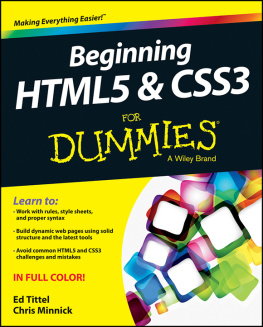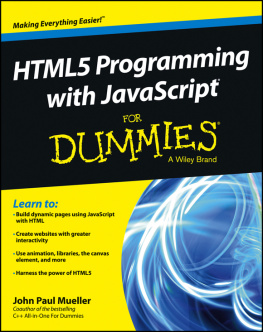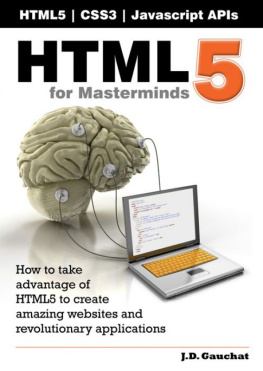J. D. Gauchat - HTML5 for Masterminds, Revised: How to take advantage of HTML5 to create responsive websites and revolutionary applications
Here you can read online J. D. Gauchat - HTML5 for Masterminds, Revised: How to take advantage of HTML5 to create responsive websites and revolutionary applications full text of the book (entire story) in english for free. Download pdf and epub, get meaning, cover and reviews about this ebook. year: 2017, publisher: MinkBooks, genre: Computer. Description of the work, (preface) as well as reviews are available. Best literature library LitArk.com created for fans of good reading and offers a wide selection of genres:
Romance novel
Science fiction
Adventure
Detective
Science
History
Home and family
Prose
Art
Politics
Computer
Non-fiction
Religion
Business
Children
Humor
Choose a favorite category and find really read worthwhile books. Enjoy immersion in the world of imagination, feel the emotions of the characters or learn something new for yourself, make an fascinating discovery.
- Book:HTML5 for Masterminds, Revised: How to take advantage of HTML5 to create responsive websites and revolutionary applications
- Author:
- Publisher:MinkBooks
- Genre:
- Year:2017
- Rating:4 / 5
- Favourites:Add to favourites
- Your mark:
HTML5 for Masterminds, Revised: How to take advantage of HTML5 to create responsive websites and revolutionary applications: summary, description and annotation
We offer to read an annotation, description, summary or preface (depends on what the author of the book "HTML5 for Masterminds, Revised: How to take advantage of HTML5 to create responsive websites and revolutionary applications" wrote himself). If you haven't found the necessary information about the book — write in the comments, we will try to find it.
The new edition of HTML5 for Masterminds is ready. Now with a complete course on Web Development and Responsive Web Design. Learn how to create websites and applications for desktop and mobile devices with HTML, CSS, and JavaScript.
HTML5 for Masterminds leads the reader step-by-step to master the complex subjects required to create websites and web applications. After reading this book, you will know how to structure your documents with HTML, how to style them with CSS, and how to work with the most powerful JavaScript APIs.
This book is not an introduction, but instead a complete course that will teach you how to build responsive websites and amazing web applications from scratch. Every chapter explores both basic and sophisticated concepts of HTML, CSS, and JavaScript. Functional examples support the information introduced in every chapter to guide beginners and experts throughout every single element, style, and function included in these languages.
The goal of HTML5 for Masterminds is to make you familiar with the most advanced technologies for the web. It was designed to prepare you for the future, and it was written for the genius inside you, for Masterminds.
Introduction to HTML, CSS and JavaScript | Traditional and Flexible Box Models | Responsive Web Design | Video and Audio | Form API and Validation | Canvas API | WebGL API | Web Audio API | IndexedDB API | Web Storage API | File API | WebSocket API |WebRTC API | Stream API | Fullscreen API | Ajax Level 2 | Web Workers API | Drag and Drop API | History API | Web Messaging API | Pointer Lock API | Geolocation API | Page Visibility API | TextTrack API and more...
This book includes:
HTML documents
CSS Style Sheets
JavaScript Programming
Responsive Web Design
2D and 3D Graphics
2D and 3D Animations
2D and 3D Video Games
CSS Traditional and Flexible Box Models
Video and Closed Captioning
Audio and 3D Audio
Form API
Canvas API
WebGL API and Three.js
Web Audio API
IndexedDB API
Web Storage API
File API
Web Socket API
WebRTC API
Stream API
FullScreen API
Ajax Level 2
Web Workers API
Drag and Drop API
History API
Web Messaging API
Pointer Lock API
Geolocation API
Page Visibility API
TextTrack API
HTML5, CSS3, JavaScript
J. D. Gauchat: author's other books
Who wrote HTML5 for Masterminds, Revised: How to take advantage of HTML5 to create responsive websites and revolutionary applications? Find out the surname, the name of the author of the book and a list of all author's works by series.

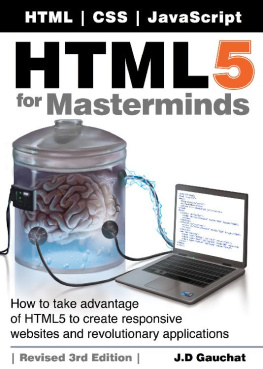

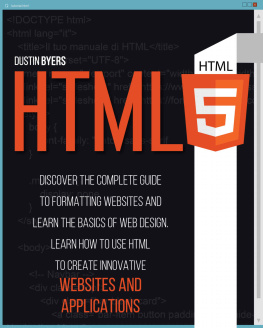
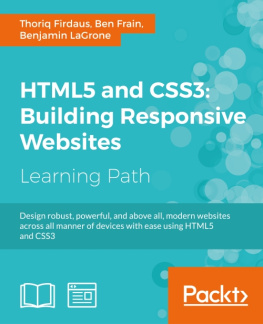

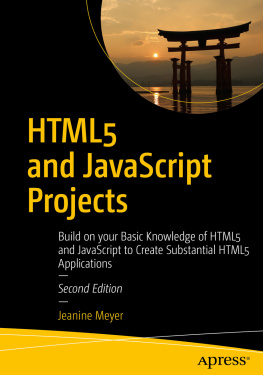
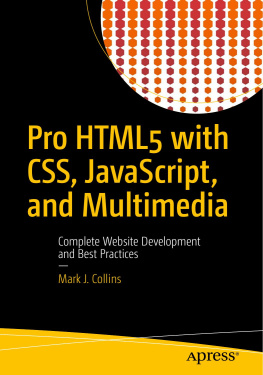
![Jeanine Meyer [Jeanine Meyer] - HTML5 and JavaScript Projects: Build on your Basic Knowledge of HTML5 and JavaScript to Create Substantial HTML5 Applications](/uploads/posts/book/120565/thumbs/jeanine-meyer-jeanine-meyer-html5-and.jpg)
